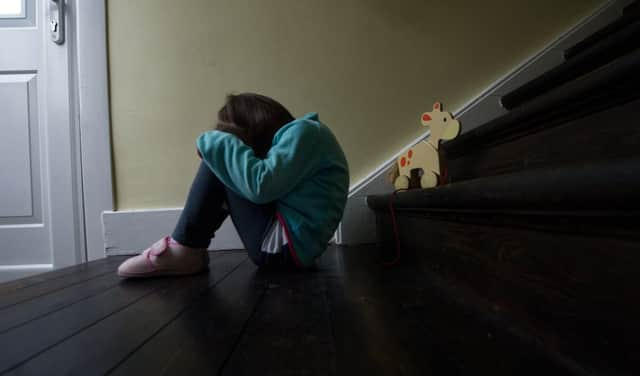Darren '˜Loki' McGarvey: Effects of child abuse don't start and end within the family


Great care is taken to present the issue of child abuse in a manner that does not upset us as an audience. In fact, sometimes we are even forewarned to prepare ourselves for ‘distressing’ images in advance of them being broadcast. Most people, when faced with such a serious and sensitive topic such as child abuse or neglect, will experience a natural level of empathy for the victims and a corresponding anger and disgust for the offenders, often the parents or guardians of the victims.
In our hearts, we feel genuine sympathy for these kids, over there, who didn’t have much of a chance. Something must be done, we tell ourselves, before moving on to the next news item. The next news item might be about young people being unruly; engaging in various forms of criminality or nuisance behaviour. Or perhaps about the blight of violence and rise of addiction in our communities. We think to ourselves ‘what is it with young people these days?’ or ‘what the hell’s going on with their parents?’
Advertisement
Hide AdAdvertisement
Hide AdThere’s a simple reason for that. These sanitised images, used to portray child abuse and neglect without upsetting us, serve only to distort the true nature of the problem. These pictures create a false impression that the victims are perpetual children, frozen in time, just waiting for us to reach into the photograph and remove them from harm. As children, they receive unlimited sympathy and professed compassion from us, the compassionate public.
But the second these kids are legally culpable, our entire posture towards them changes. We adopt the role of the abusive parent or guardian, with a short temper and unrealistically high expectations. The moment they stop looking like children we collectively reject, exclude, punish and condemn them. When the truth, whether we want to accept it or not, is that in many cases, the neglected and abused kids, the unruly young people and the lousy, irresponsible, violent, drug-addicted parents are all the same person at different stages of their life; human beings, manufactured by poverty, scuttling on the conveyor belt toward complete social exclusion with the assembly line always – without fail – beginning in a dysfunctional home.
It’s almost cliché to point out the correlation between poverty and the sort of social deprivation that creates the conditions for cultures of abuse and neglect to thrive, but there is simply no getting away from it.
And while it’s important that we retain an air of perspective and rational objectivity when trying to find solutions to generational social problems, it’s also important we don’t get so distant from the reality of human suffering that the issues become dinner party anecdotes or political footballs.
This is not to say that all kids living in poverty have their lives predetermined, or that they lack agency when they become adults. Nor is it to absolve people of responsibility for their actions. But let’s be frank, the various advances we’ve made in recognising both the rights and needs of children will remain nothing more than window dressing until we quit the partisan political point-scoring for long enough to come to some sort of consensus around tackling this issue.
Because when these problems do flare up, they are rarely self-contained within the family or the community. Instead, they spill out into our society and multiply.
They spill into over-crowded casualties and high-dependency hospital wards. They spill into six-month long waiting lists to access clinical psychologists and psychiatric counselling facilities. They spill into over-run social work departments and inundated supported accommodation projects barely keeping their heads above water. They spill into stressful housing offices, packed-to-capacity crisis centres and outmoded addictions services. And for some they spill into police stations, sheriff courts, children’s homes, secure units, young offender institutions and prisons.
A vulnerable family, living in constant economic uncertainty, job insecurity or subject to an inhumane sanctions regime often lacks the capacity to absorb, process and practically address life’s unpredictable adversities. Poverty is about having no margin for error while living under increasing stress and unpredictability. A stock image of a child sitting on a step outside a room in a house does not adequately express this complexity and creates a false impression in the public mind of what is really driving child abuse and neglect – it’s poverty, stupid.
Advertisement
Hide AdAdvertisement
Hide AdIn these homes a bereavement, job loss, benefit cut or sanction can spread like wild-fire throughout the family, engulfing everyone in the flames of emotional distress. Instead of lending one another support, family members go into emotional retreat, unable to cope with the situation. Resentment and tension builds as communication breaks down; creating fertile ground for explosive emotional outbursts and incidents that prolong stress – setting the scene for unhealthy coping strategies that later develop into addictions.
It’s in these households, where addiction is present, that cultures of abuse are more likely to take root and where child abuse is concerned, this is the factory floor. So, next time you’re confronted by a drug-addict, a drunk or an unruly young person terrorising your community, take that wee picture out your pocket, of the kid sitting on the steps, and rather than rolling your eyes before dialling 999, stop and search your heart for a change.